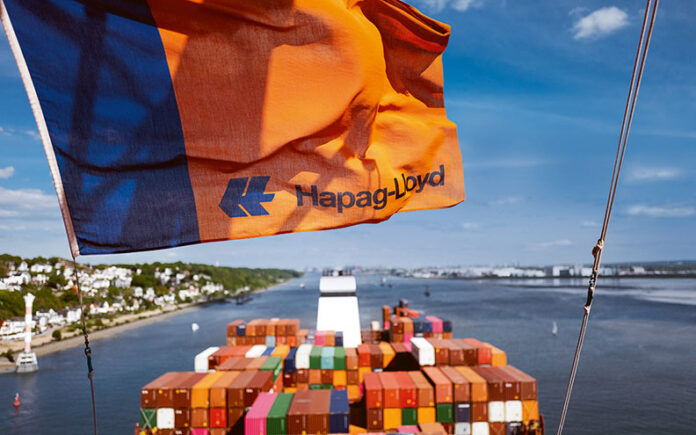-
Hapag-Lloyd saw a 59.4% jump in EBITDA for 2022 to US$20.5
-
EBIT also grew 66.7% to $18.5 billion due to higher freight rates
-
Revenues rose 37.9% to 26.4 billion from $26.4 billion
-
2022 container throughput in 2022 was 11.8 million TEUs vs 11.9 million TEUs in 2021
Hapag-Lloyd saw a 59.4% jump in EBITDA (earnings before interest, taxes, depreciation and amortization) for 2022 to US$20.5 billion (EUR 19.4 billion) from the previous year’s $12.8 billion, based on preliminary and unaudited figures, the German ocean liner announced in a press statement on January 31.
EBIT rose 66.7% to $18.5 billion primarily attributed to higher freight rates. At the same time, disruptions in global supply chains and inflation have led to a significant increase in costs.
Revenues reached $36.4 billion in 2022 from $26.4 billion, a 37.9% leap due to an increase in the average freight rate to $2,863/TEU last year, from $2,003 in 2021.
By the end of 2022 though, freight rates had fallen significantly as congestion eased and demand weakened as consumers concerned about inflation and a likely global recession held on to their cash.
Transport volumes for full-year 2022 were at 11.8 million twenty-equivalent units, roughly on a par with the 11.9 million TEUs in 2021.
The company said it will release its 2022 annual report, along with the audited final results, and its outlook for this year in a virtual press briefing on March 2.
The significantly higher earnings year-on-year in 2022 capped the Hamburg-headquartered company’s 175th founding anniversary.
The year marked the time when Hamburg-Amerikanische Packetfahrt-Actien-Gesellschaft (Hapag) and North German Lloyd put their first ships to sea carrying general cargo and passengers to New York.
Hapag-Lloyd thus began “an exciting history marked by changes and upheavals” to grow into a leading and globally active container liner shipping company that it is today.
Germany’s largest container line, a member of The Alliance, which attributed its strong performance primarily to higher freight rates carried over from 2021, when the pandemic drove growth in e-commerce as most people chose to stay indoors.
However, disruptions in global supply chains due to port congestion in US and European ports and production disruptions in China due to a wave of COVID-19 contagion that swept the country’s manufacturing regions led to a significant increase in costs.
In the latter part of the year, the congestion had eased but rates that hit historic highs in early 2022 began to decline steadily by February and closed the year near 2019 pre-COVID levels.
RELATED READ: Hapag-Lloyd acquires 35% of Indian port operator





